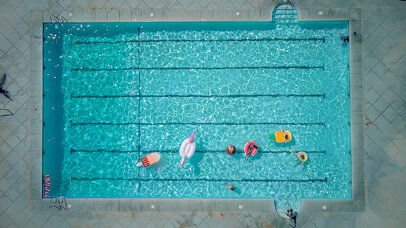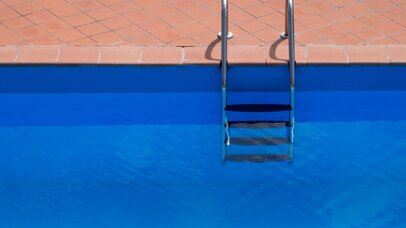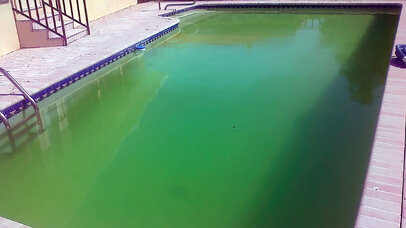As a pool owner, I know pool algae infestation may be a top concern.
It’s unsurprising, as this is one of the most common issues faced by pool owners in Australia. The good news is that there are several ways to detect and prevent algae in your pool from becoming a nuisance.
Read on to learn how!
What Are The Reasons Behind Algae Growth In Your Pool?
Although you may think poor water sanitation and dirty pool surfaces are the only causes of algae growth, this isn’t always the case. Proper pool maintenance can also result in algae growth, mainly due to the following reasons:
- Extreme cold or warm temperatures
- Sudden malfunctioning of the pool pump or filtration system
- Poor water circulation
- pH imbalance
- Lack of sunlight due to natural shades
However, neglecting the algae problem for too long may result in an algae bloom or an ‘explosion.’ In other words, unprecedented algae blooms can affect your swimming pool water, making the pool healthy. It can also affect the pool equipment and surface, often requiring thousands of dollars in repairs.
Detecting algae spores early on is essential, as is implementing the proper methods to prevent them from becoming a nuisance. And in the following sections, we will help you do just that!
Pool Algae Prevention- All You Need To Know
If you notice that your pool water has developed green, red-brown, or thick white scum, avoid coming in contact with the water or anything that the water has touched. This is a sure-shot sign of algal bloom.
However, it’s essential to inspect further and identify the type of algae so that you can implement the proper measures to kill algae. As such, we’ve discussed the four main types of pool algae that can contaminate the water and the most effective ways to prevent them.
1. Green Algae
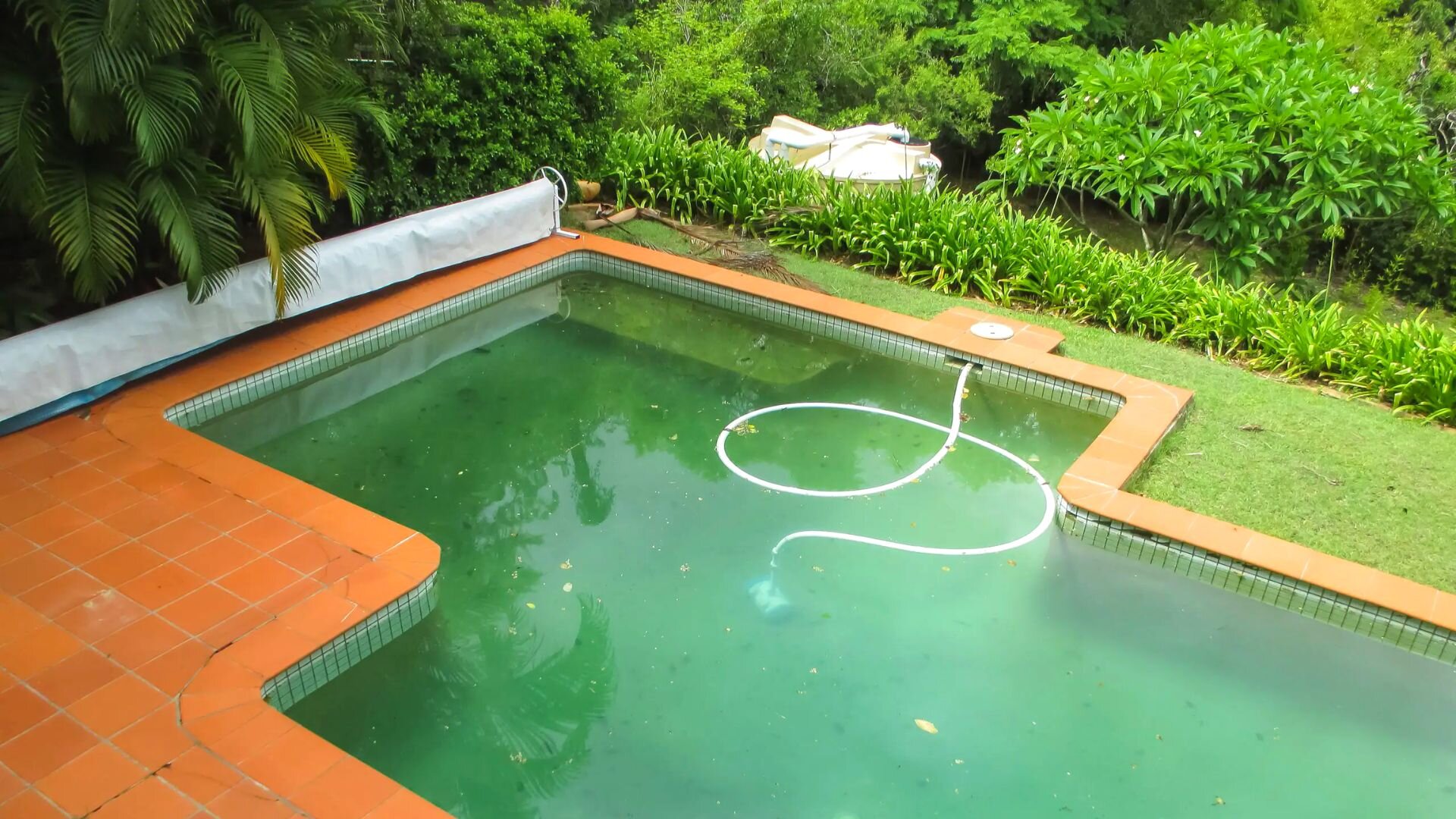
Green algae is the most common type affecting residential and commercial pools alike in the country. Although the name may suggest otherwise, green algae can have different colour variations, like dark green, yellow-green, or even blue-green, with a slimy texture.
This green slime typically appears on the edges of the pool walls and areas that remain shielded from the sun. Fortunately, it’s also among the easiest ones to eliminate with chlorine shock treatment. This method involves adding a high dose of chlorine to the water to increase the free chlorine levels, which can help disinfect the pool.
You can use granular chlorine (like calcium hypochlorite) for this purpose, but ensure that you don’t disrupt your pool’s recommended pH level. Once done, treat the water with an effective algaecide to kill off any remaining green pool algae spores.
2. Mustard Algae

The green-yellow or brownish spores of mustard algae are often mistaken for regular dirt and debris. But there’s an easy DIY test to confirm its presence. Run your fingers over the spots- if they feel grainy, you can remove them by scrubbing them with a pool brush.
But if the suspected areas feel slimy and gooey to the touch, you’re likely dealing with a mustard algae infestation. This algae is inclined to the pool’s walls, pool filter and pool toys, so don’t forget to check them out. Besides, they may cling to your swimming costume and reinfect the water if you wear it inside the pool again without adequately cleaning the fabric.
Although removing mustard algae isn’t necessarily arduous, it can come back to infect the same places. This is primarily because it resists usual chlorine levels and moderate temperatures. It can even affect clean water with proper pool circulation, a functional filter system and the right pH level!
So, how do you prevent the proliferation of mustard algae in your pool? Well, the first step is scrubbing the visible spores (which can be living or dead algae) with a pool brush until they’re entirely gone.
Then, shock the water with chlorine or other pool chemicals (as required) to reset the pool’s water chemistry and rebalance the nutrients. This should remove any existing algae and reduce the chances of re-infestation.
As the last step, use a high-quality algaecide; your pool water should be free from these nasty microorganisms.
3. Black Algae
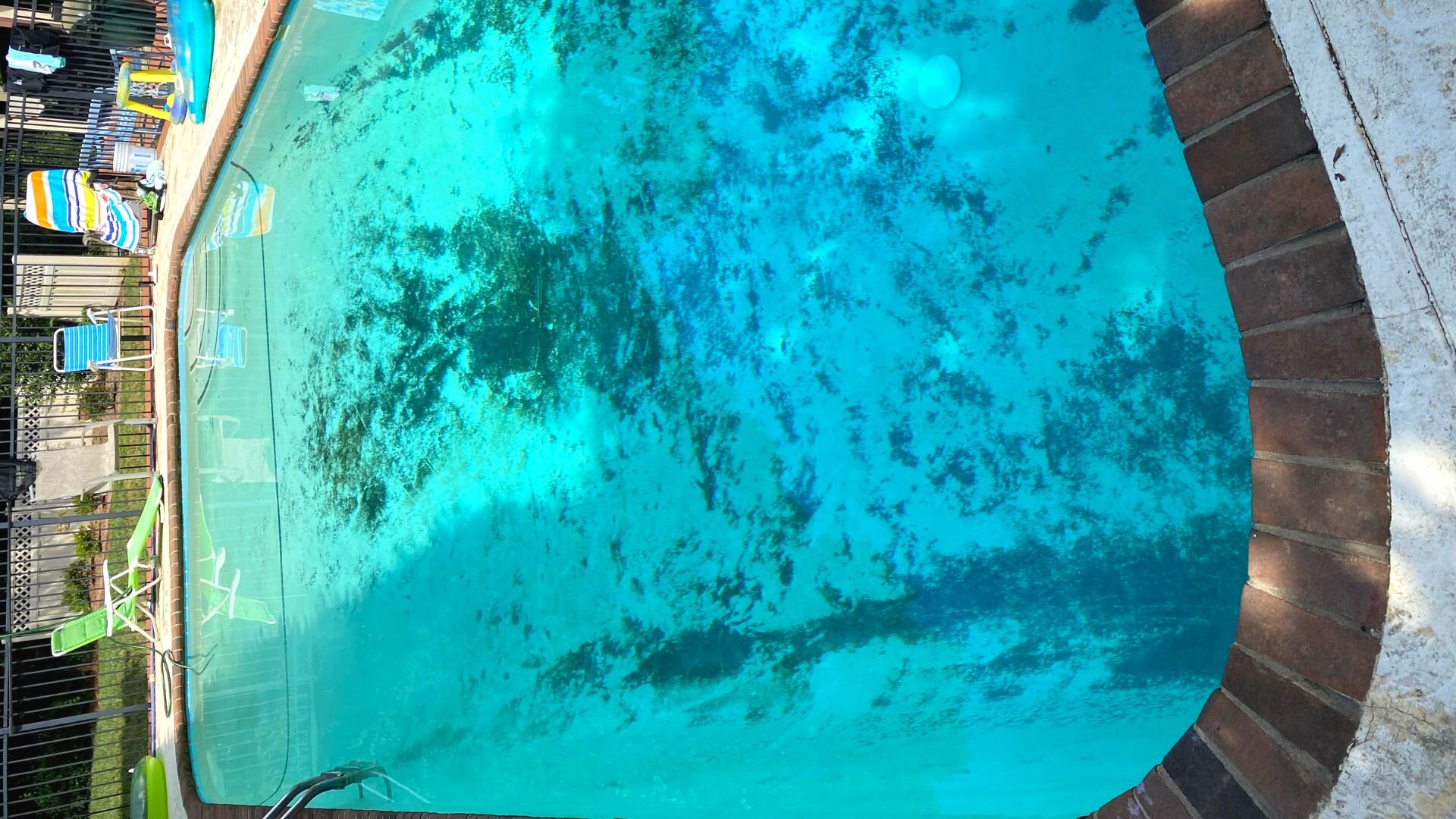
Sporting a bluish-green (almost black) colour, black algae generally proliferate on the plaster surface of tiled or concrete pools, especially in extreme weather conditions. It can also enter the water through infected swimming costumes and quickly spread to the whole pool.
Much like mustard algae, black algae is resistant to a standard chlorine level, so manually removing the spores by scrubbing is an important first step. This actually helps remove the slimy layer on top, allowing the algae treatment to work more effectively.
You can then add the required chemicals to balance the chemical levels, which should help kill algae gradually. However, treating the water with algaecide is recommended to remove algae, and then preventative methods like shocking the pool are used.
4. Pink Algae
Pink algae is a type of bacteria that can spread slowly and thrive in the cracks and crevices of pools with low chlorine levels. In case of an infestation, you will likely spot pink slime around the corners, the steps and any smooth surfaces on the pool. However, it’s very unlikely that the infestation will cover entire pool surfaces.
Preventing pink algae requires shocking the pool with granular chlorine- even better if you can throw in your pool accessories to get them treated simultaneously. Remember that adding infected accessories to a clean pool will promote the regrowth of the algae spores.
How To Keep Your Pool Clean?
Since algal growth is also facilitated by uncontrollable factors like the weather and sudden pool equipment malfunction, it’s nearly impossible to prevent algae growth completely. But there are a few things you can do regularly to keep the pool free from the problem for long periods and reduce the risk of severe infections. These include:
- Maintaining the right pool chemistry and pH of the pool at all times
- Cleaning the pool pump and filter regularly
- Scrubbing the pool surface to remove any deposited debris
- Removing plant debris and other organic matter from the water
- Cleaning pool accessories, swimming costumes and cleaning equipment
- Using phosphate removers to deter algae
- Shocking the pool from time to time to rebalance chemicals
Enjoy Your Pool Every Day & Keep The Algae Away!
It’s important to remember that adding chemical pool cleaners, chlorine, or other chemicals can cause nutrient and pH imbalances in the water. Besides, they can damage the pool equipment if not appropriately applied in the right amount.
So, if you don’t have your way with pool chemicals, it’s best to call an industry-leading professional service like The Pool Co. Our trained experts are equipped to handle all kinds of algae infestations while ensuring that you don’t encounter any unnecessary pool problems.
We hope this guide has helped you understand and eliminate pool algae. See you in the following guide!

